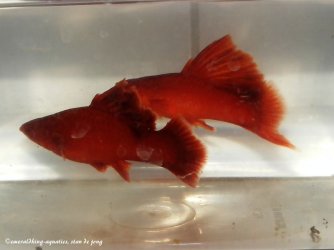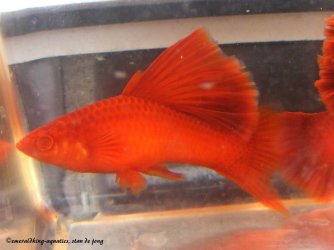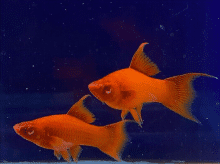Firestorm_1976
New Member
I am in Arizona. Looking for hifin (or cauliflower, but not large enough to affect effortless swimming ability) swordtails (would be happy with hifin juveniles). Only interested in bright red or ruby red color, with no white or black marking anywhere (sword included). My preference is NON-red-eyed, but open to red eye, if fish is healthy with good eye-sight/food competitive.





